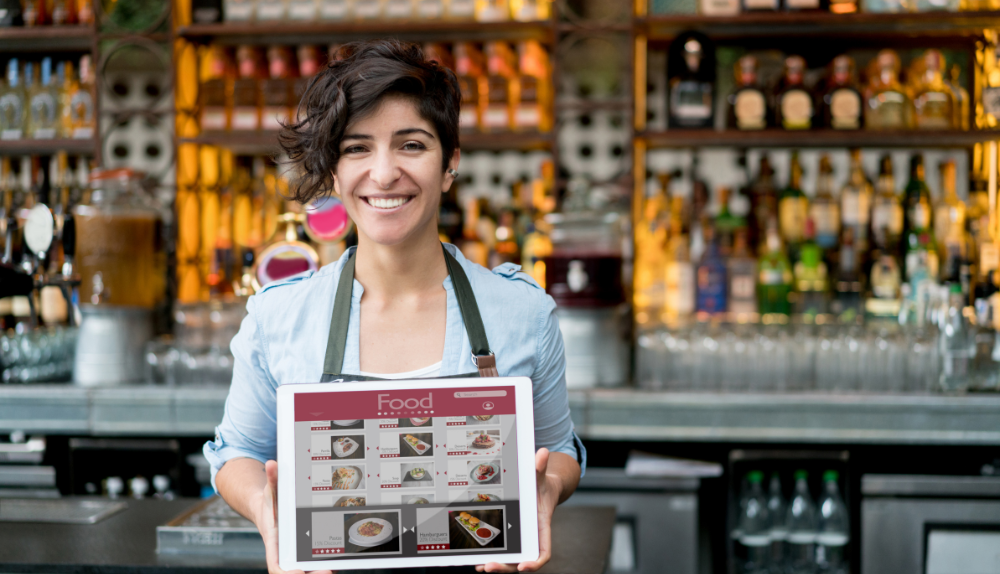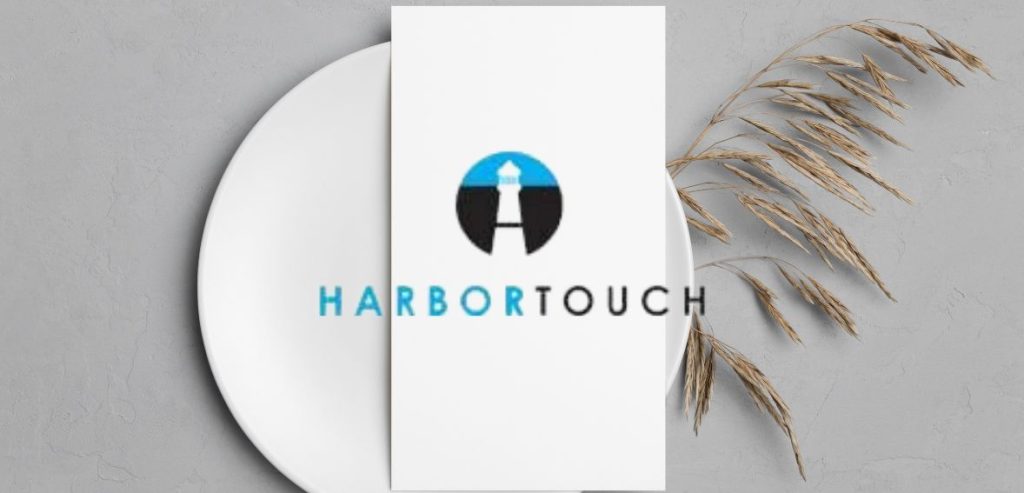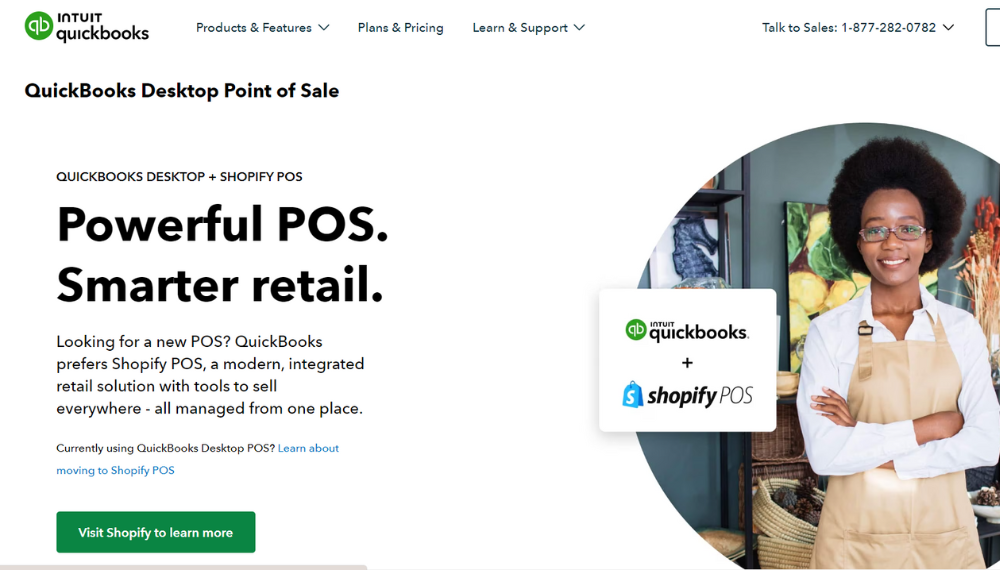Step into the future of dining with digital restaurant menus! Gone are the days of flipping through paper menus or squinting at tiny text. Today, technology has revolutionized the way we explore, order, and savor our culinary experiences. From interactive displays to seamless mobile apps, digital restaurant menus have taken the food industry by storm, offering a plethora of benefits for both diners and establishments alike. In this comprehensive guide, we will delve into everything you need to know about this cutting-edge trend that is reshaping the way we dine. Get ready to discover the exciting features, advantages, and delicious possibilities that await as we navigate through the digital landscape of restaurant menus. Whether you're a tech enthusiast, a foodie looking for new experiences, or a restaurant owner seeking to enhance your customer's journey, this is your ultimate roadmap to the world of digital menus. So, let's embark on this tantalizing adventure together and explore the future of dining!
Types of Digital Menus for Restaurant
digital menus have transformed the way we interact with restaurant menus, offering a range of options to suit different preferences and needs. Whether it's through interactive display menus, mobile apps, QR codes, digital menu boards, or online ordering platforms, these innovative solutions provide a seamless and engaging dining experience. As technology continues to evolve, the future of restaurant menus is undoubtedly digital, promising enhanced convenience, interactivity, and customization for diners worldwide. So, let's dive into the exciting world of digital menus and discover the possibilities they bring to the table.
Interactive Display Menus
Interactive display menus are a game-changer in the world of dining. These menus utilize touch-screen technology to create a visually appealing and engaging customer experience. With vibrant images, detailed descriptions, and intuitive navigation, interactive display menus allow diners to explore menu items with ease. Whether it's zooming in on a dish for a closer look or tapping on ingredients to learn more, these menus provide an interactive and immersive dining experience.
Mobile Apps
In the age of smartphones, mobile apps have become an integral part of our lives. Restaurants have leveraged this trend by developing their own dedicated mobile apps, offering customers a convenient and personalized way to browse their menus. Through these apps, diners can explore the menu, customize their orders, and even make reservations. With features like real-time updates, push notifications, and loyalty programs, mobile apps provide a seamless and tailored experience for diners, enhancing their overall satisfaction.
QR Code Menus
Quick Response (QR) codes have gained immense popularity, especially in the wake of the COVID-19 pandemic. QR code menus eliminate the need for physical menus by allowing customers to scan a code with their smartphones, instantly accessing the digital menu. This contactless solution ensures a hygienic and safe dining experience. QR code menus can be easily updated, making it convenient for restaurants to modify their offerings, highlight specials, or include nutritional information. They are cost-effective, eco-friendly, and provide a hassle-free way for diners to access menu details.
Digital Menu Boards
Digital menu boards are a modern take on traditional menu displays. These high-definition screens are strategically placed in restaurants to showcase menu items, promotions, and eye-catching visuals. With
dynamic content that can be updated in real-time, digital menu boards offer flexibility and the ability to adapt to different times of the day or specific occasions. Restaurants can easily experiment with new dishes, showcase seasonal offerings, and entice customers with appealing visuals that enhance their dining experience.
Online Ordering Platforms
Online ordering platforms have witnessed a surge in popularity, especially with the rise of food delivery services. These platforms enable customers to browse menus, place orders, and make payments online. By integrating their menus with these platforms, restaurants can reach a wider audience, expand their customer base, and streamline the ordering process. With features like customization options, order tracking, and customer reviews, online ordering platforms offer convenience and transparency for both dine-in and delivery customers.
Features and Benefits of Digital Restaurant Menus
Digital menus bring many features and benefits that enhance the dining experience for both customers and restaurants. Let's explore some of the key features and advantages of using digital menus:
Visual Appeal
Digital menus leverage high-resolution images, videos, and graphics to create visually stunning displays. This allows restaurants to showcase their dishes in an enticing and delicious manner, capturing customers' attention and piquing their interest. The visual appeal of digital menus can significantly influence customers' decision-making process and increase the likelihood of trying new items.
Real-Time Updates
One of the standout advantages of digital menus is the ability to update them in real-time. Restaurants can instantly modify menu items, pricing, descriptions, and even daily specials with just a few clicks. This flexibility ensures that customers always have access to the most accurate and up-to-date information, eliminating any confusion or disappointment that can arise from outdated printed menus.
Interactive Elements
Many digital menus incorporate interactive elements, such as touch-screen technology or clickable buttons, allowing customers to engage with the menu in a more dynamic way. Interactive menus enable customers to zoom in on dishes for a closer look, view additional images or videos, and even access detailed nutritional information or allergy warnings. These interactive features provide a more immersive and personalized dining experience.
Customization Options
Digital menus often offer customization features that cater to individual preferences and dietary restrictions. Customers can easily modify menu items by selecting different ingredients, adjusting portion sizes, or adding extra toppings. This level of customization ensures that each customer can tailor their order to their specific tastes, leading to higher satisfaction and repeat visits.
Enhanced Order Accuracy
With digital menus, the risk of miscommunication or errors in taking
orders is significantly reduced. Customers can directly input their preferences and special requests, minimizing the chances of misunderstandings. This improves order accuracy, reduces kitchen errors, and ultimately leads to a smoother and more efficient dining experience.
Upselling and Cross-Selling Opportunities
Digital menus provide an excellent platform for restaurants to promote upselling and cross-selling. By strategically placing enticing visuals, recommendations, or pairing suggestions, restaurants can encourage customers to explore additional menu items or upgrade their orders. This not only increases revenue but also introduces customers to new and exciting dining options.
Environmental Sustainability
Digital menus contribute to environmental sustainability efforts by reducing the consumption of paper and ink. By eliminating the need for printed menus, restaurants can significantly decrease their carbon footprint and contribute to a greener planet. Additionally, digital menus reduce waste generated from outdated or unused paper menus.
Customer Insights and Analytics
Digital menus can collect valuable data and provide insights into customer preferences, popular menu items, and ordering patterns. This information allows restaurants to make data-driven decisions, optimize their menu offerings, and tailor their marketing strategies to serve their customers better. By understanding customer preferences and behavior, restaurants can enhance the overall dining experience and build stronger customer relationships.
How to Design a Digital Menu?
Designing a digital menu requires careful consideration of various factors to create an appealing and user-friendly experience for your customers. Here are some steps to help you design an effective digital menu:
Understand Your Brand and Target Audience
Begin by defining your restaurant's brand identity and understanding your target audience. Consider your restaurant's theme, ambiance, and cuisine style. This knowledge will help you align your digital menu design with your brand personality and cater to the preferences and expectations of your target customers.
Organize Menu Sections and Categories
Structure your menu in a logical and intuitive manner. Divide your menu into sections and categories, such as appetizers, entrees, desserts, or beverages. This organization helps customers navigate through the menu easily and find what they are looking for. Avoid overcrowding the menu with too many items in a single category, as it can overwhelm customers.
Use High-Quality Images
Incorporate high-resolution images of your menu items to entice customers visually. Professional food photography can significantly enhance the appeal of your dishes and stimulate customers' appetites. Ensure that the images accurately represent the actual presentation of the food, as customers' expectations should match what is served.
Provide Clear and Descriptive Text
Use clear and concise descriptions for each menu item. Highlight the key ingredients, flavors, cooking techniques, and any unique selling points. Avoid lengthy paragraphs and opt for bullet points or short sentences to make it easier for customers to read and comprehend the information. Include any relevant dietary or allergen information as well.
Consider Typography and Font Size
Select legible and visually appealing fonts for your digital menu. Choose fonts that align with your brand image and are easy to read on various screen sizes. Ensure that the font size is large enough to be comfortably read by customers, even on smaller devices.
Utilize White Space
Incorporate ample white space in your design to create a clean and uncluttered appearance. White space helps guide customers' focus, enhances readability, and makes the menu visually appealing. It also allows the menu items and images to stand out more effectively.
Incorporate Branding Elements
Infuse your digital menu with branding elements such as your logo, brand colors, and unique design elements. This helps reinforce your restaurant's identity and creates a cohesive visual experience for customers.
Test and Optimize
Before finalizing your digital menu, test it on different devices and screen sizes to ensure it is responsive and displays properly. Seek feedback from a diverse group of individuals, including both staff members and potential customers, to identify any areas that may need improvement. Continuously gather feedback and make adjustments to optimize the design based on user experience.
Implementing a Digital Menu at Your Restaurant
To implement a digital menu at a restaurant, start by choosing a digital menu platform that suits your needs. Collect high-quality images and descriptions of your menu items. Design an appealing menu layout that is easy to navigate. Install the necessary hardware, such as tablets or digital displays, and ensure a reliable internet connection. Train your staff on how to use the digital menu system and provide ongoing support. Promote the digital menu to customers through signage, social media, and in-person communication. Gather feedback from customers and make adjustments as needed. Continuously update and improve your digital menu based on customer preferences and technological advancements.
Final Words
In conclusion, implementing a digital menu at your restaurant can bring numerous benefits and enhance the overall dining experience. By embracing technology and leveraging digital solutions, you can provide customers with visually appealing menus, real-time updates, interactive features, and customization options. A digital menu not only streamlines operations and improves order accuracy but also contributes to environmental sustainability by reducing paper waste. Furthermore, it allows you to gather valuable customer insights and make data-driven decisions. By investing in a well-designed and user-friendly digital menu, you can stay ahead in the competitive food industry, cater to the evolving preferences of your customers, and create a memorable dining experience that keeps them coming back for more.
Frequently Asked Questions (FAQs)
Can digital menus be easily updated?
Yes, one of the advantages of digital menus is their ability to be updated in real-time. Restaurants can make changes to menu items, pricing, descriptions, and specials instantly, ensuring that customers always have access to the most current information.
How do customers access digital menus?
Customers can access digital menus through various means, depending on the restaurant's chosen format. This can include interactive displays, mobile apps, QR codes that link to online menus, or through the restaurant's website.
Are digital menus user-friendly for customers?
Yes, digital menus are designed with user-friendliness in mind. They often feature intuitive navigation, clear visuals, and organized categories to help customers easily browse and find their desired menu items.
Can digital menus accommodate dietary restrictions or allergies?
Digital menus can include detailed descriptions of menu items, allergen information, and customizable options. This allows customers to make informed choices based on their dietary needs or restrictions.
Do digital menus require an internet connection?
Yes, most digital menu systems rely on a stable internet connection. This ensures that updates and changes can be made in real time, and customers can access the menu content seamlessly.





